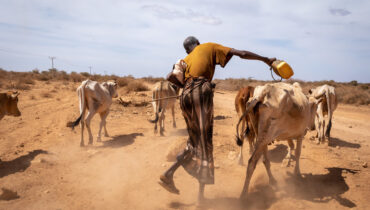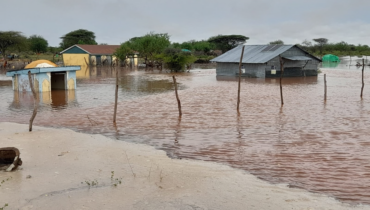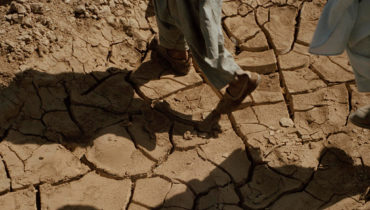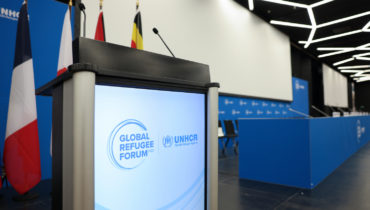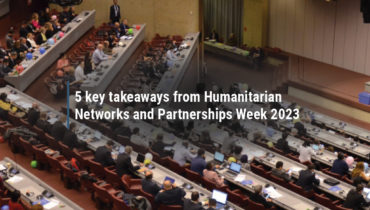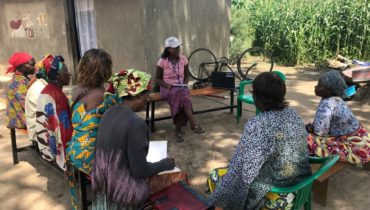Addressing the protracted water crisis in Iraq with nationwide WASH assessments
20 October 2020
In the 1970s, the population in Iraq enjoyed a relatively high level of water supply and sanitation services. Over 95% of the urban population and over 75% of the rural population had access to safe and potable water. Unfortunately, the chronic neglect and mismanagement of water infrastructure in Iraq – itself the result of a series of conflicts starting in the 1980s and compounded by recent climate change trends – has culminated in a dire situation where residents are no longer being provided with adequate, fresh, and safe water. This situation, repeating itself over decades, has paved the way for a private water sector to proliferate, born from the insufficient, and at times unsafe, delivery of water to the population through state-owned Water Treatment Plants (WTP).
Advocating for Iraq’s obligation to respect, protect and fulfill the right to water for all – a measure enshrined in Iraq’s constitution of 2005 – Human Rights Watch already made the call in 2019 for a study to be made on the state of the public water treatment plants, and their capacity to deliver on this fundamental and crucial right. To uphold this universal right in Iraq, the maintenance of defective water treatment plants has been identified as a priority by actors such as OFDA and the World Bank, who have increasingly been focusing on activities related to the reconstruction, development, and refurbishing of existing water treatment plants, in the hopes of improving the access to safe water for all residents. As a barrier to this ambition, Iraq suffers from significant information gaps relative to the capacity of their WTPs and their ability to deliver safe water to local populations.
Since Iraq is considered an extremely water stressed country, achieving the crucial mandate of water for all will be a challenge. However, up-to-date data that aims to shed light on all the facets of this crisis can provide actors with an evidence-based shared understanding from which to tackle this vital task effectively.
Lack of information systematically hindered the emergence of a solution
Although Iraq has entered a post-conflict recovery phase in 2020, the country continues to face challenges in providing essential services and addressing basic needs, such as the access to water, in vast areas of the territory. The 2019 HNO estimated that 2.3 million people across Iraq will remain in critical need of sustained and appropriate WASH services.
Water scarcity and rising turbidity are increasingly understood to pose vital threats moving into 2020. Compounding this is the fact that there is no existing mechanism in the country to obtain updated information on key WASH needs and gaps in and out of camps in Iraq. Very little data is available on the WASH conditions and on the ability of WTPs to function effectively, thus hindering the accuracy of a response which has yet to yield any impactful results against the ongoing water crisis.
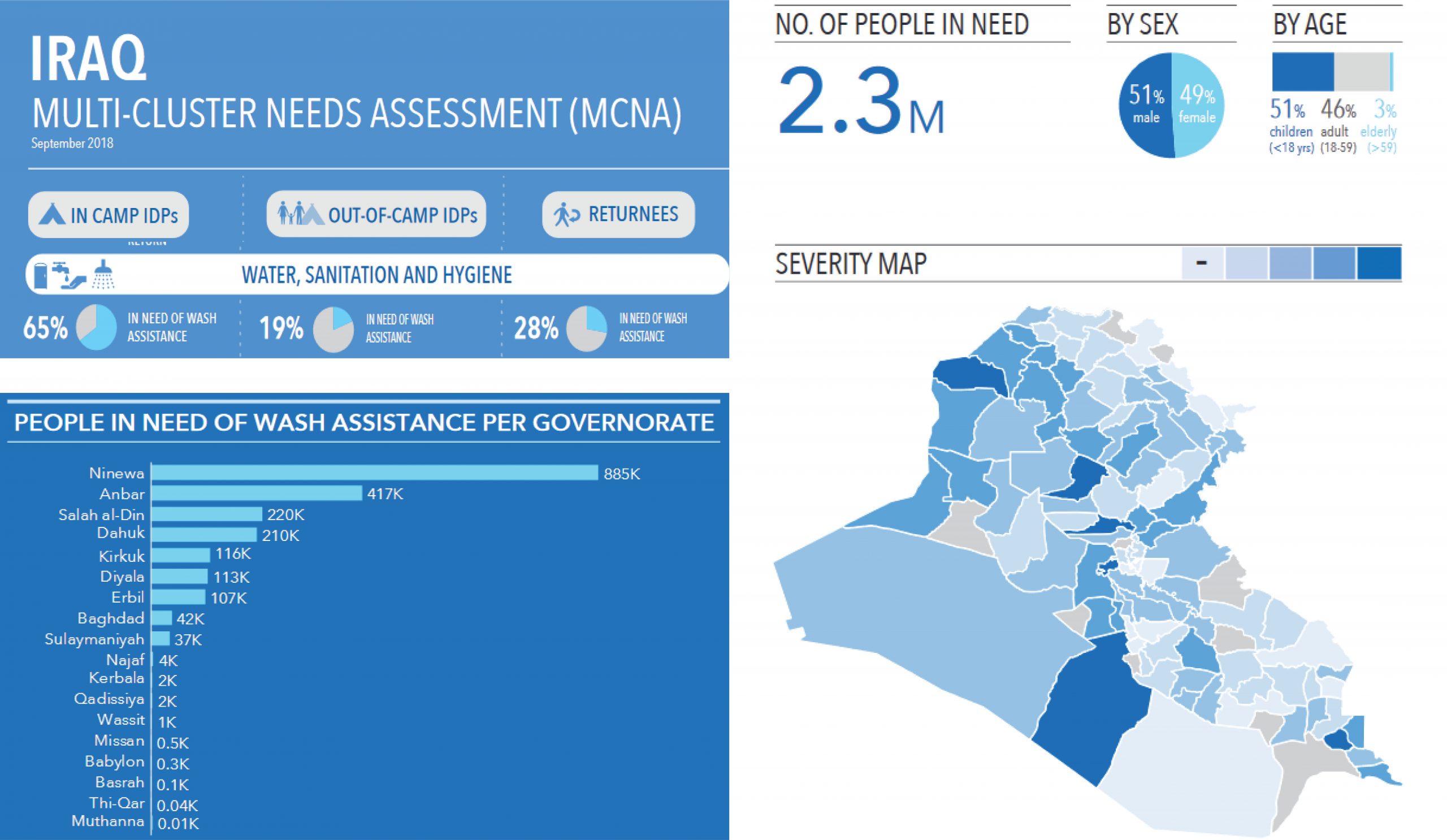
Key findings related to the WASH cluster from the Iraq Humanitarian Needs Overview 2019 are extracted from the REACH Iraq Multi-Cluster Needs Assessment (available here on the REACH Resource Centre).
Building the baseline of key data related to WASH and Water Treatment Plants
To tackle this systemic lack of information, and its repercussion on the understanding aid actors have on the water crisis currently affecting Iraq, REACH teams in the country set out to fill these gaps over the course of 2019 through extensive and multi-faceted data collection exercises geared to retrieve strategic information on the multiple issues compounding the water crisis in Iraq.
First and foremost, REACH teams gathered nation-wide information on the WASH needs of households across the country, in-camp and out-of-camp. By conducting a large scale WASH-dedicated assessment, REACH provided the WASH cluster and other committed actors with a baseline to determine the precise status of WASH services, and to flag the critical needs and gaps.
In total REACH teams surveyed over 13,000 households- including host, returnee, and IDP communities- across 59 districts and 39 camps. On top of this, REACH staff conducted a Water Treatment Plant mapping exercise, providing another layer of information regarding the WTPs whose capacity and reliability to deliver safe water was left completely in the dark. To gain an even deeper perspective, REACH teams followed this up with two separate remote-sensing assessments aimed at improving knowledge on the water situation in the country: a precipitation analysis, as well as a surface water change analysis between the years 1984 to 2018, focused on comparing three major reservoirs in Iraq.
This video shows how a simple walk-through the REACH Resource Centre can give the reader access to all outputs related to WASH activities in Iraq, as well as all other assessments REACH has conducted in the region, and in the rest of the world.
What the data said and its added-value for shaping response
All in all, these various assessments provide aid actors seeking to respond to the water crisis in Iraq with some reliable and operational information on the main issues affecting the country, how they stem, and how they can be effectively addressed.
Evaluating the situation of 39 camps across Iraq, REACH teams found that:
- 89% of households reported using an improved source of primary drinking water
- 41% of households reported facing problems related to water access. The most commonly reported reasons cited by households was that the water is turbid (68%), tastes unpleasant (44%), and it is unsafe (38%).
- 46% of households are forced to resort to negative coping mechanisms to compensate for the lack of access to water.
- 52% of households reported to treat their water before drinking
- 32% of households reported to rely on a less preferred (untreated) water source for drinking water
- 70% of households had access to basic handwashing facilities
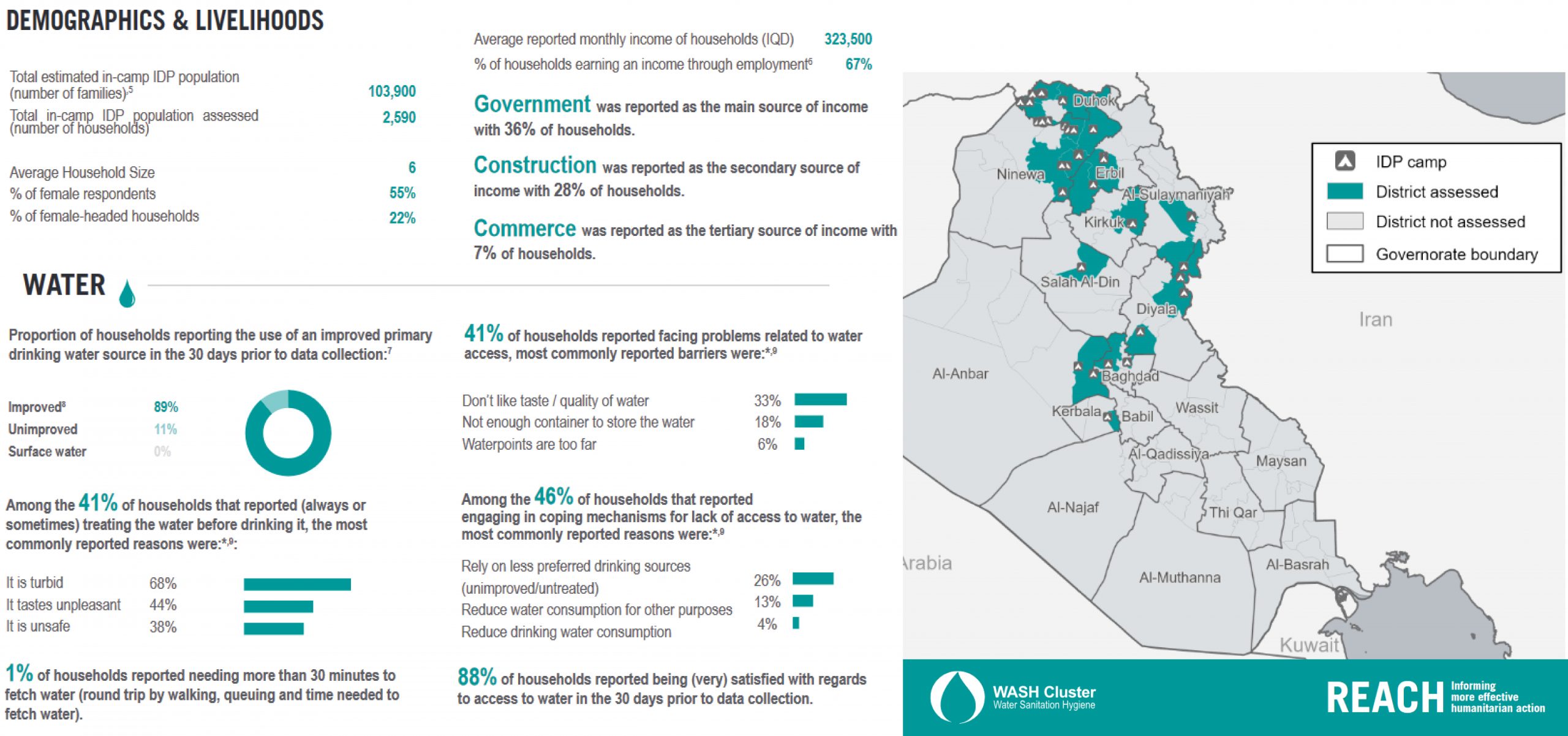
Key findings and map extracted from the nationwide REACH In-camp WASH assessment, as well as the out-of-camp assessment.
What these two assessments clearly showed was that the majority of Iraqi households chooses to procure bottled water from a shop, or directly from treatment plants that filter and deliver safe water. This water however is often procured at expensive prices, putting the most financially vulnerable under increased pressure. Yet no matter how impoverished, Iraqi residents prefer to allocate resources for procuring safe water rather than risk using potentially turbid and unsafe water emanating from the national WTPs- crucial resources that could be invested in fulfilling other basic needs.
REACH teams also conducted a comprehensive long-term surface water change analysis. The study showed that Iraq’s surface water experienced a downward trend during the years 1984-2018, while neighbouring countries experiences a water surface increase during the same timeframe.
These findings indicate that the high levels of water turbidity may correlate with the decrease in surface water witnessed by the aforementioned analysis:
- In districts surrounding the three reservoirs, a relatively large proportion of households reported their drinking water being turbid or unclear (59%), compared to households in other areas.
- Such reports were particularly high in Kerbala district, for example, where 100% of households reported that their drinking water was turbid. The reason for this localized turbidity may be that, as the shoreline recedes and reservoir water becomes more concentrated, silt and other particulates become more prevalent, increasing the water’s turbidity.
- This also coincides with the fact that the majority of households in the area reported bottled water as their main source (74% of households).
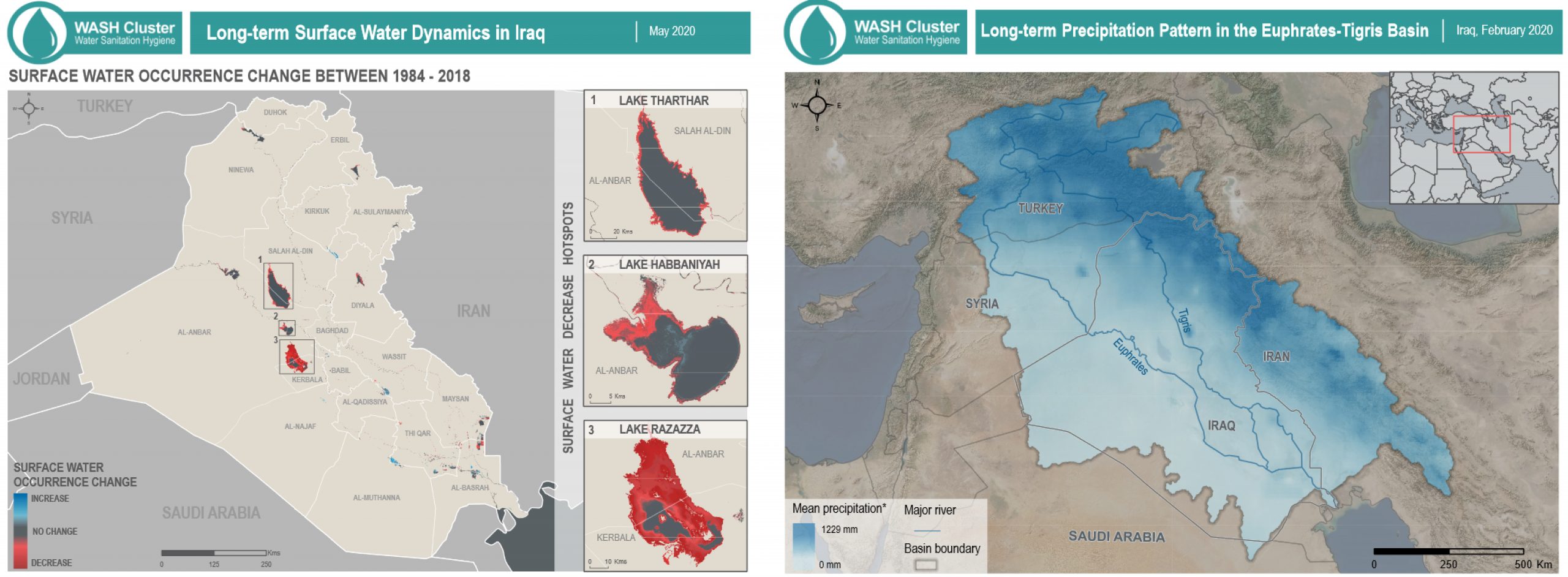
Left: Map extracted from the long-term surface water change analysis. Right: Map extracted from long-term precipitation pattern analysis.
“After all this data collection, we started to paint a reliable picture of what the water issues were in Iraq. One of them was the sheer amount of people treating their water for turbidity, or using bottled water as their primary source. Zooming into districts with high levels of such indicators enabled us to see linkages with the levels of water surface change” explains James Henderson, WASH focal for the REACH team in Iraq.
High turbidity increases the need for water treatment, whilst simultaneously reducing the effectiveness of Water Treatment Plants and even disabling them whenever turbidity levels are too high. With very little information on the WTPs, the situation assessed by REACH also highlighted an urgent need for further investigation into the state of these infrastructures.
To pioneer this effort, the REACH team in Iraq led a participatory mapping exercise which enabled the creation of an online dashboard which provides up-to-date information on the location, capacity and functionality of the current 240 WTPs in activity.Feeding this mapping exercise with information will be key in the humanitarian community’s effort in reestablishing the provision of accessible water to all populations in Iraq. The WTP mapping exercise also provides the WASH cluster, and other relevant actors, with the proper level of information to stage strategic interventions on the water system in Iraq that are likely to have a positive impact on the access to water for all.
Going forward – feeding more data to leverage an impactful response
To unlock the critical water situation in Iraq then, more granular research must be done on the state of WTPs in Iraq, and their role in providing safe accessible water to all households in need. It is key to be able to put on the map, literally, where water is still not accessible. The stakes are not only economical. In the long-term, the livelihoods of entire rural communities come under threat. Another risk is linked to the increased reliability of the population on expensive water sources, with prices often being volatile.
Whilst the seemingly desperate water crisis in Iraq now has an evidence-base from which to plan strategic, targeted and impactful responses based on a shared understanding of nation-wide WASH needs, further research will be required. The end goal is that addressing this infrastructure issue in a targeted and prioritized manner will enable aid actors to alleviate the water crisis that has been plaguing Iraq in the past decades. If the heavy lifting has been achieved in terms of retrieving key information, the response now needs to reflect this and incorporate key findings in the hopes of tackling one of the world’s most severe water crisis.
Aid actors and other relevant WASH stakeholders are invited to explore the online dashboard to see all the information regarding the state and capacity of assessed Water Treatment Plants. The reliable and timely update of data in the dashboard will provide the humanitarian community with a valuable asset for shaping a more effective response to the current water crisis in Iraq.
For more information
All the WASH related assessments conducted by REACH in Iraq can be accessed online through the REACH Resource Centre.
To download the nation-wide WASH assessment, please feel free to click the link for the in-camp assessment and out-of-camp.
Click here to view the Water Treatment Plant mapping dashboard.
The long-term surface water change analysis is available online as well:
The precipitation analysis is also available in both English and Arabic versions.
Get in touch
Elizabeth White
REACH Country Coordinator in Iraq
[email protected]
Emmanuel Gamard
Communication Officer
[email protected]


